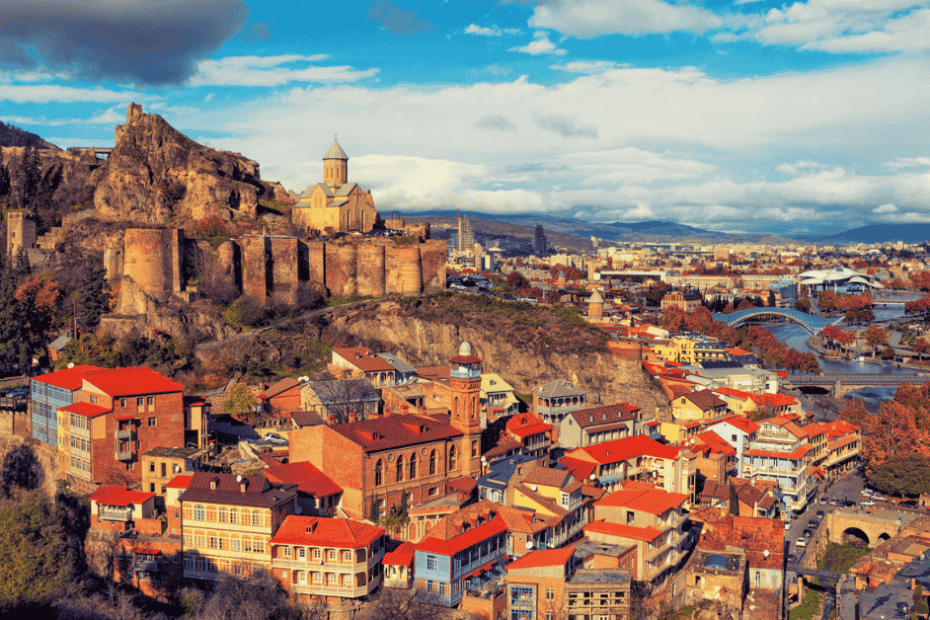Planning a trip to Georgia and wondering how to make the most of your six days? I’ve got you covered. This beautiful state offers a mix of vibrant cities, stunning landscapes, and rich history that promises an unforgettable adventure. Whether you’re a nature enthusiast, a history buff, or a foodie, Georgia has something for everyone.
Key Takeaways
- Diverse Experiences: The 6-day itinerary in Georgia offers a wide range of experiences, from historical and cultural exploration in Tbilisi to outdoor adventures in Kazbegi and relaxing wellness activities in Borjomi.
- Historical Significance: Visits to ancient sites like the Old Town of Tbilisi, Mtskheta, Jvari Monastery, Uplistsikhe, and the Joseph Stalin Museum provide deep insights into Georgian history and its cultural significance.
- Scenic Beauty: The journey includes stunning landscapes such as the panoramic views of the Caucasus mountains, the picturesque Georgian Military Highway, and the lush greenery of Borjomi Central Park.
- Culinary Delights: The itinerary highlights Georgia’s rich culinary heritage with opportunities to savor local dishes like khachapuri and khinkali, along with a specialized wine-tasting tour in the famous Kakheti wine region.
- Outdoor Activities: Adventurous activities are plentiful, including hiking in Kazbegi, exploring Truso Valley, horse riding, and even paragliding near Gudauri.
- Relaxation and Wellness: The final day in Borjomi focuses on relaxation with its famous mineral springs and wellness spas, providing a peaceful end to the trip.
Day 1: Exploring Tbilisi’s Old Town

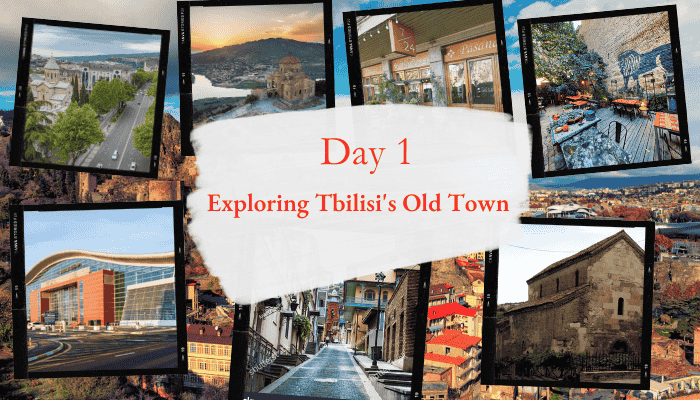
Start your six-day adventure in Georgia by exploring the vibrant Old Town of Tbilisi. This area brims with history, culture, and stunning architecture.
Arrival and Accommodation
Arrival: Fly into Tbilisi International Airport (TBS). After landing, take a brief taxi ride or use public transit to reach the Rustaveli District, known for its arts and culture.
Accommodation: To stay centrally located, consider hostels like Moosica Hostel, Fabrika Hostel, or At Funicular Hostel. For more upscale options, try 160 Degrees Hotel, Tbilisi View Hotel, or The Terrace Boutique Hotel. The Rustaveli District provides easy access to Tbilisi’s main attractions and vibrant nightlife.
Must-Visit Sites
Old Town: Begin your exploration with the cobbled streets of Tbilisi’s Old Town. Here, find ancient churches and charming architecture in close proximity. Significant landmarks include the Anchiskhati Basilica and the Sioni Cathedral, both showcasing exquisite Georgian architectural styles.
Jvari Monastery: Drive to Jvari Monastery, located on a hilltop near Mtskheta. This site offers panoramic views of the confluence of the Aragvi and Mtkvari rivers and the scenic old capital. Dating back to the 6th century, the monastery is a perfect example of early Christian architecture.
Dining Options
Local Cuisine: For authentic Georgian food, visit cafes and restaurants such as Pasanauri or Machakhela. Try local dishes like khachapuri (cheese-filled bread) and khinkali (dumplings).
International Fare: If you crave something global, Tbilisi’s Old Town offers options like Shavi Lomi and Ezo for a fusion of local and international flavors. End your day with dessert at a local bakery or gelato from Luca Polare, a popular spot for sweet treats.
Day 2: Day Trip to Mtskheta and Jvari Monastery
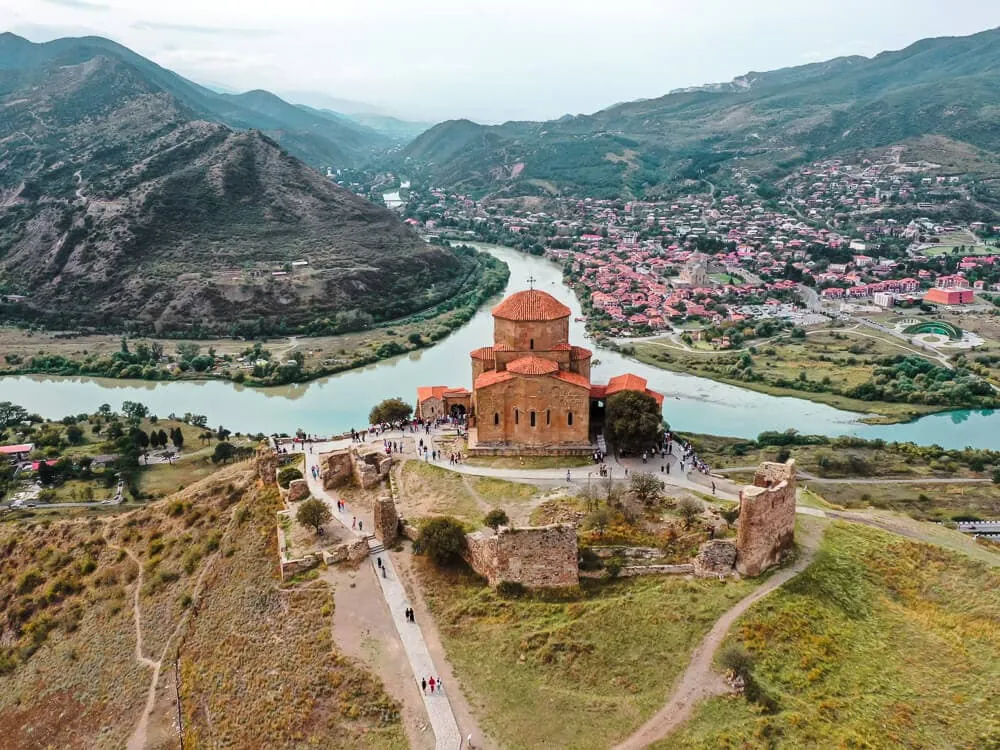

Day 2 takes us to Mtskheta, Georgia’s ancient capital, and the iconic Jvari Monastery. Let’s jump into what makes this day trip a must-do.
Historical Significance
Mtskheta served as Georgia’s capital from the 3rd century BC to the 5th century AD. This city is home to the Monuments of Mtskheta, Georgia’s first UNESCO World Heritage Site. Famous for its blend of history and culture, this site is invaluable for understanding the roots of Georgian civilization.
Jvari Monastery, perched on a hilltop, symbolizes Georgian Christianity. Built in the 6th century, it’s an architectural marvel and offers panoramic views of the confluence of the Aragvi and Mtkvari rivers. This monastery played a pivotal role in spreading Christianity throughout the region, cementing its religious significance.
Travel Tips
Mtskheta is just a 45-minute drive from Tbilisi. Booking a private cab through your hotel is a convenient option. Alternatively, take a Marshrutka (minibus) from Didube bus station for 1-2 GEL (return ticket).
Guided tours can offer structured experiences, enhancing your understanding of the historical context. Check the weather beforehand to enjoy clear views from Jvari Monastery. If you enjoy hiking, there’s a path from Teatroni Park leading up to the monastery, offering both a physical challenge and spectacular scenery.
Local Cuisine to Try
While in Mtskheta, local cuisine is a must-try. Opt for khinkali, Georgian dumplings packed with spiced meat, typically lamb or beef. Churchkhela, a traditional Georgian snack made from nuts and grape juice, offers a sweet treat. If you’re in the mood for a lighter dish, try khachapuri, a cheese-filled bread that’s a staple in Georgian cuisine.
Day 3: Adventure in Kazbegi
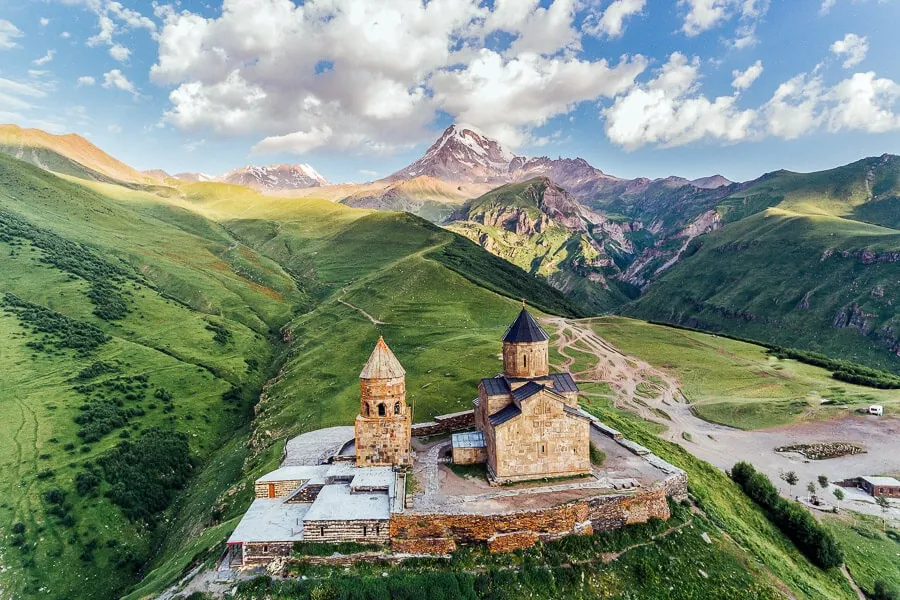
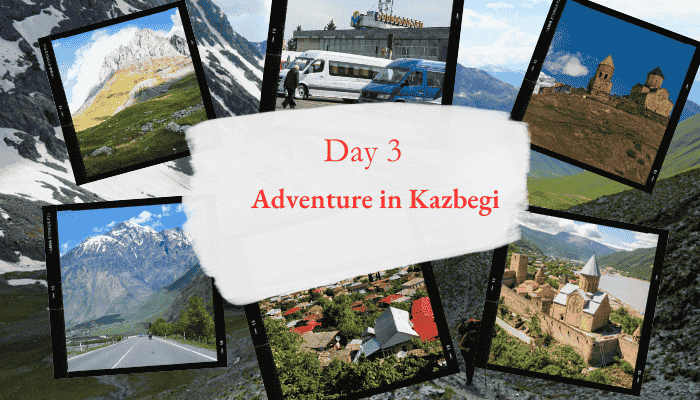
Getting There
Traveling to Kazbegi from Tbilisi’s an exciting journey. Driving along the Georgian Military Highway, I enjoyed picturesque views that made the 2-3 hour trip worthwhile. For those starting from Telavi, taking a marshrutka to Tbilisi first then transferring to another marshrutka to Kazbegi works well. These shared minibuses are an economical and common choice in Georgia.
Key Attractions
Kazbegi offers unforgettable sights. The Gergeti Trinity Church stands as a must-visit location. Accessible by car or a moderate hike, the church rewards visitors with breathtaking views of the surrounding Caucasus mountains.
Another highlight is the Ananuri Fortress Complex. Dating from the 13th to 16th centuries, it includes a fortress, churches, and towers all set against a stunning mountain backdrop. To appreciate the full beauty of the Georgian Military Highway, I recommend stopping by Jinvali Lake. Its turquoise waters provide a perfect photo opportunity and a moment of tranquility.
Outdoor Activities
Kazbegi’s outdoor adventures make the trip memorable. Hiking enthusiasts like me can explore the scenic Truso Valley or Juta, both accessible by car or taxi. Horse riding offers a unique way to experience the mountains and all levels of riders can join guided tours.
For thrill-seekers, paragliding near Gudauri provides an adrenaline-packed experience. Soaring above the mountains, the views from the sky are beyond compare and offer a different perspective of Georgia’s natural beauty.
Day 4: Exploring Uplistsikhe and Gori
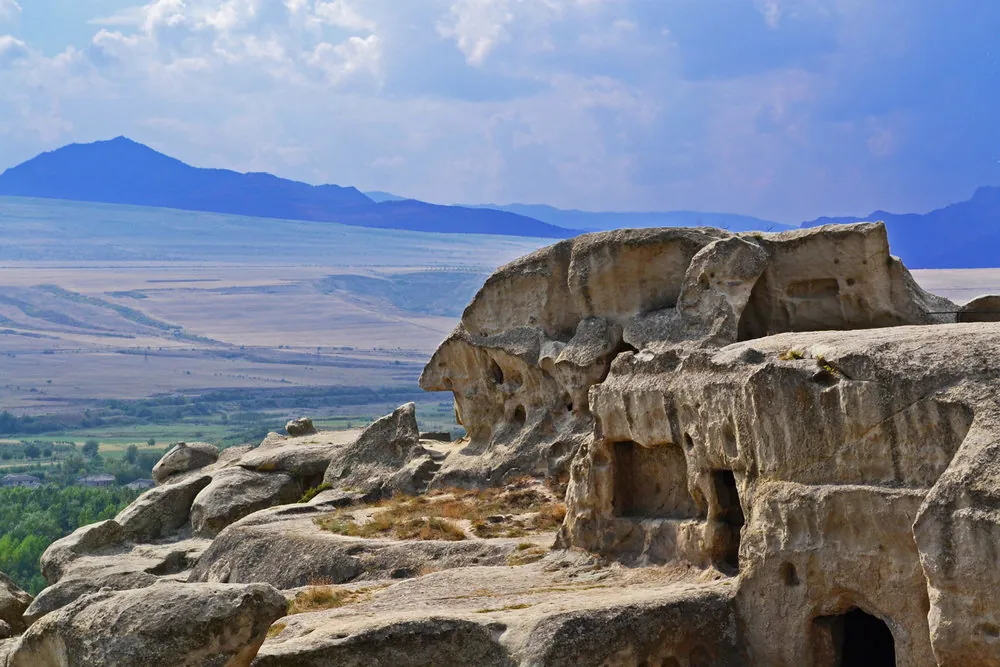
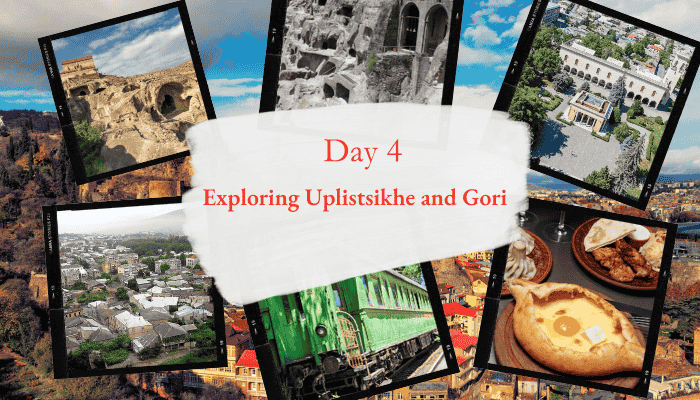
Ancient Cave Town
Arriving in Gori by marshrutka from Tbilisi takes about 90 minutes and costs 4 Lari or $2.50 USD. From there, I hired a taxi to Upllistsikhe, costing around 15 USD, including waiting charges.
Entry to Uplistsikhe costs 3 Lari, and I opted for an English-speaking guide for 25 Lari. The guide’s knowledge enhanced my understanding of this ancient city, built between the 6th century BC and the 11th century AD. I explored structures like the apothecary, bakery, prison, cellars, and the hall of Queen Tamar.
The town’s three levels feature a network of tunnels and alleys. I noticed the ingenuity in the construction—everything carved out of rock. Even though the ruins, the remnants of daily life in ancient times can still be felt. It’s a testament to human resilience and creativity, spanning centuries of occupation.
Joseph Stalin Museum
After leaving Uplistsikhe, I returned to Gori to visit the Joseph Stalin Museum. Gori is Stalin’s birthplace, making the museum a focal point of the town. The entry fee was reasonable, and the exhibits comprehensive.
The museum is divided into three sections: Stalin’s house, the museum building, and his personal railway carriage. The house where Stalin was born still stands, preserved in its original condition. The museum offers a chronological walk through Stalin’s life, displaying personal belongings, photographs, and documents.
The railway carriage, used by Stalin from 1941 onwards, was particularly fascinating. It showcased the luxury Stalin traveled in, a stark contrast to the hardship endured by many during his regime. The museum offers a poignant insight into Soviet history and Stalin’s influence.
Local Recommendations
For a fuller experience in Gori, I followed a few local recommendations. Nearby restaurants offer traditional Georgian dishes. I tried khachapuri and khinkali at a local eatery, savoring the rich flavors of the region.
The local markets are worth exploring. I purchased fresh produce and handmade crafts, supporting local artisans. Souvenirs like Georgian wine and traditional clothing also make excellent keepsakes.
Gori Fortress, perched above the city, provides panoramic views and a sense of history. It’s accessible on foot and entry is free. The climb rewarded me with breathtaking views of the town and surrounding world.
Incorporating these local experiences enriched my visit, making it memorable beyond the historical sites alone.
Day 5: Relaxation in Borjomi
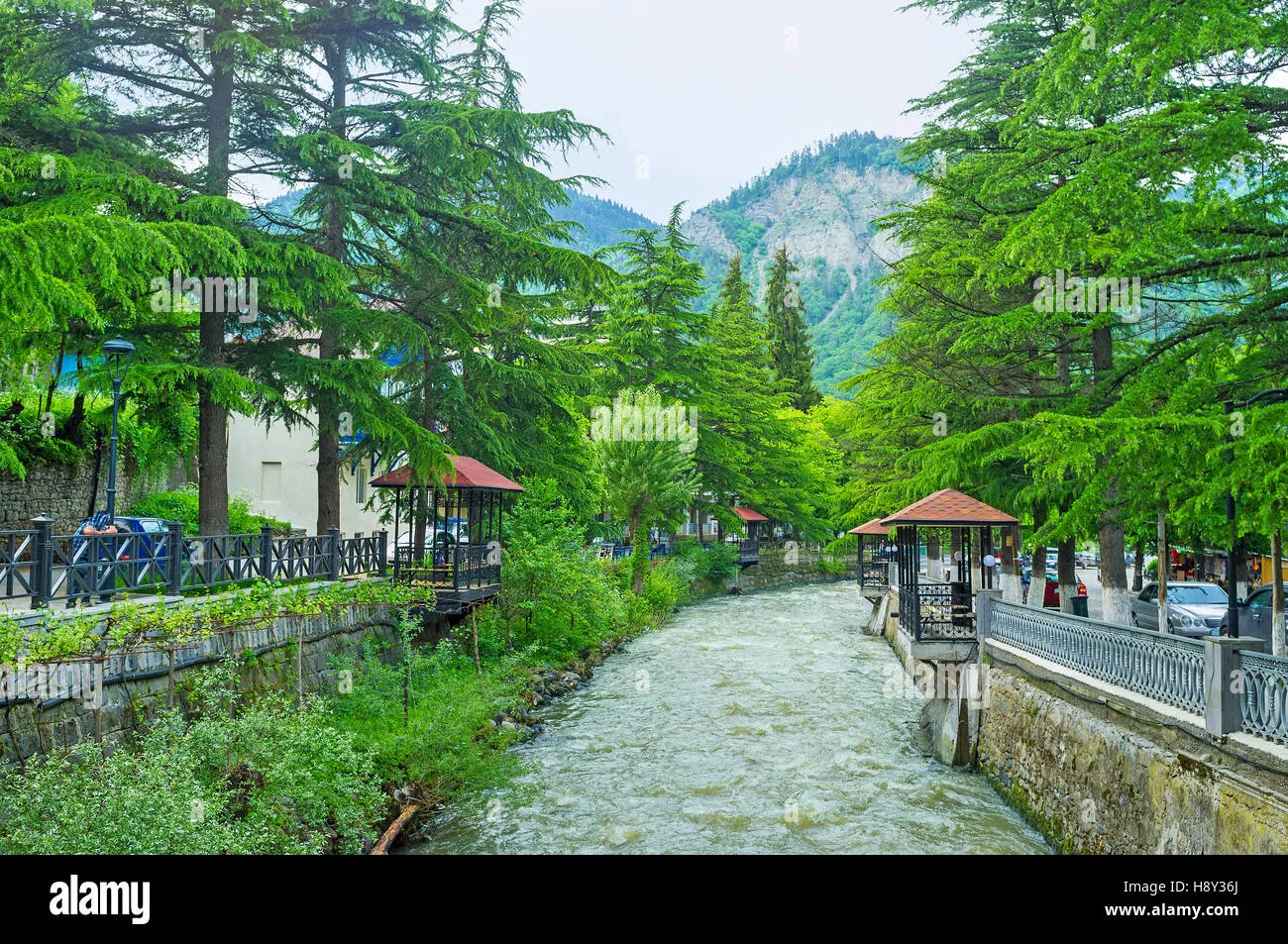
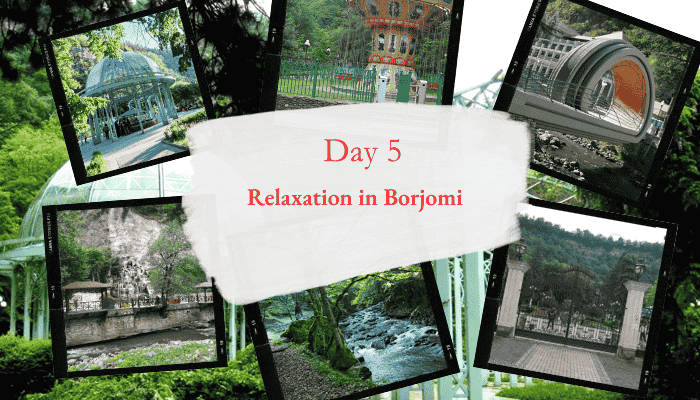
Day 5 offers relaxation in Borjomi, featuring its famous mineral springs and lush parks.
Borjomi Central Park
Borjomi Central Park, a must-visit, showcases lush greenery, mineral springs, and family-friendly activities. The park’s centerpiece is Ekaterina Spring, the town’s original mineral water source. Known for its unique taste and healing properties, this spring has attracted visitors since the 7th century BC. Walking through the park, I discovered various attractions catering to all ages. The verdant forest trails were perfect for a leisurely stroll, offering a serene backdrop for relaxation.
Several small bridges, playgrounds, and cafes add to the park’s charm. I found benches and picnic spots ideal for a short rest or a meal amidst nature. The park’s open spaces provided an excellent opportunity for a casual family picnic. Adding to the experience, the park also offers pedal boats for a fun activity on the water. Visiting Borjomi Central Park not only relaxed me but also connected me to the town’s historic and natural essence.
Natural Springs and Spas
Borjomi’s natural springs and spas are world-renowned, especially for their therapeutic properties. At Ekaterina Spring, I tasted the mineral-rich water known for its unique flavor and health benefits. The constant 27°C temperature of the spring-fed swimming pools made for a perfect, soothing dip. These pools are particularly popular for their healing qualities, which many believe aid in digestion and overall wellness.
Wandering further, I encountered several small spas offering various wellness treatments using the spring water. These included mineral baths, massages, and other therapies designed to promote relaxation and health. The tranquil atmosphere of the park complemented these services, making the entire experience deeply rejuvenating. Borjomi’s reputation as a health resort is well-deserved, with its blend of natural beauty and wellness offerings creating a perfect sanctuary for relaxation.
Final Thoughts
Borjomi provides a tranquil end to the 6-day Georgia itinerary. The blend of natural springs, lush parks, and wellness activities offers a unique retreat. Spending time at Borjomi Central Park and exploring the therapeutic springs felt refreshing after several days of travel and exploration. The diverse experiences, from sampling mineral waters to enjoying family-friendly activities, ensured my day was both relaxing and enjoyable. Borjomi’s offerings made for a fitting conclusion to my Georgian adventure, highlighting the nation’s rich natural and cultural heritage.
Conclusion
My six-day journey through Georgia was nothing short of spectacular. From the historic charm of Tbilisi and the serene beauty of Kazbegi to the rich cultural experiences in Gori and the relaxing retreat in Borjomi each day offered something unique. The wine tasting in Kakheti and the therapeutic springs of Borjomi added special touches to an already unforgettable trip. Georgia’s blend of natural beauty and cultural heritage left a lasting impression on me. I can’t wait to return and explore more of this incredible country.
Frequently Asked Questions
What are the main attractions in Tbilisi’s Old Town?
In Tbilisi’s Old Town, you can explore historic churches, vibrant bazaars, sulfur baths, and charming narrow streets filled with boutiques and cafes.
What historic sites can be visited near Tbilisi?
Notable historic sites near Tbilisi include the Jvari Monastery and the ancient town of Mtskheta, both UNESCO World Heritage Sites.
What is special about a day trip to Kazbegi?
A day trip to Kazbegi offers breathtaking views of the Caucasus Mountains, including the famous Gergeti Trinity Church perched high above the town.
What can I expect from a wine tasting tour in Kakheti?
In Kakheti, you can enjoy sampling various Georgian wines, learning about traditional winemaking methods, and visiting local vineyards.
What unique sites can be visited in Gori?
Gori is home to the Uplistsikhe cave town and the Joseph Stalin Museum, offering insights into ancient history and Soviet heritage.
What activities are available in Borjomi Central Park?
Borjomi Central Park features mineral springs, family-friendly activities like playgrounds and pedal boats, and beautiful walking paths.
What are the benefits of Borjomi’s natural springs and spas?
Borjomi’s natural springs and spas are known for their therapeutic properties, providing mineral-rich waters and relaxing wellness treatments.
How does Borjomi contribute to a serene end to a Georgian adventure?
Borjomi offers a peaceful retreat with its lush parks, wellness activities, and calming natural beauty, ensuring a refreshing conclusion to your trip.
Are there specific recommendations for enjoying local culture in Gori?
Yes, local recommendations in Gori include trying traditional Georgian cuisine, visiting local markets, and engaging with friendly locals to better understand Georgian culture.

